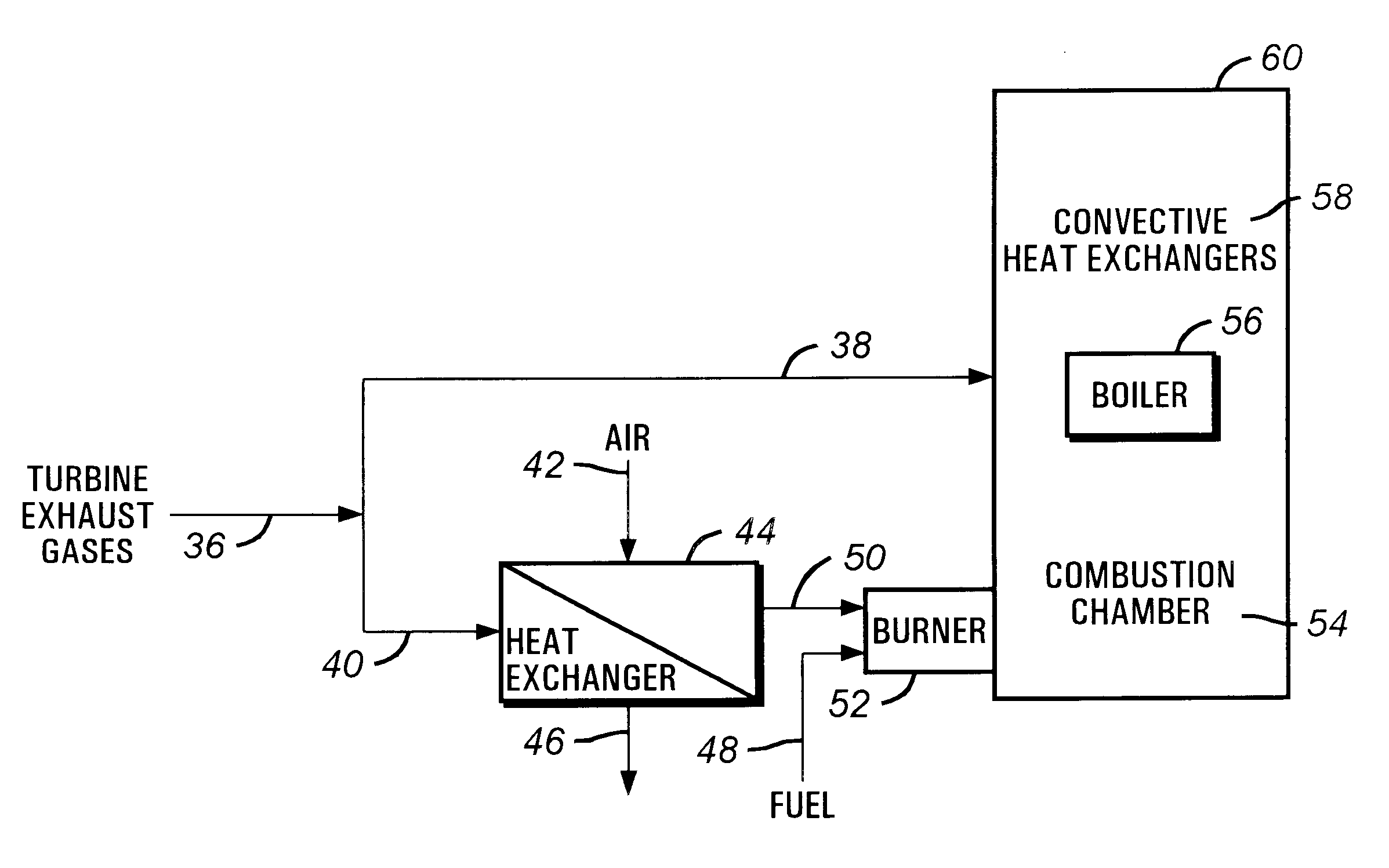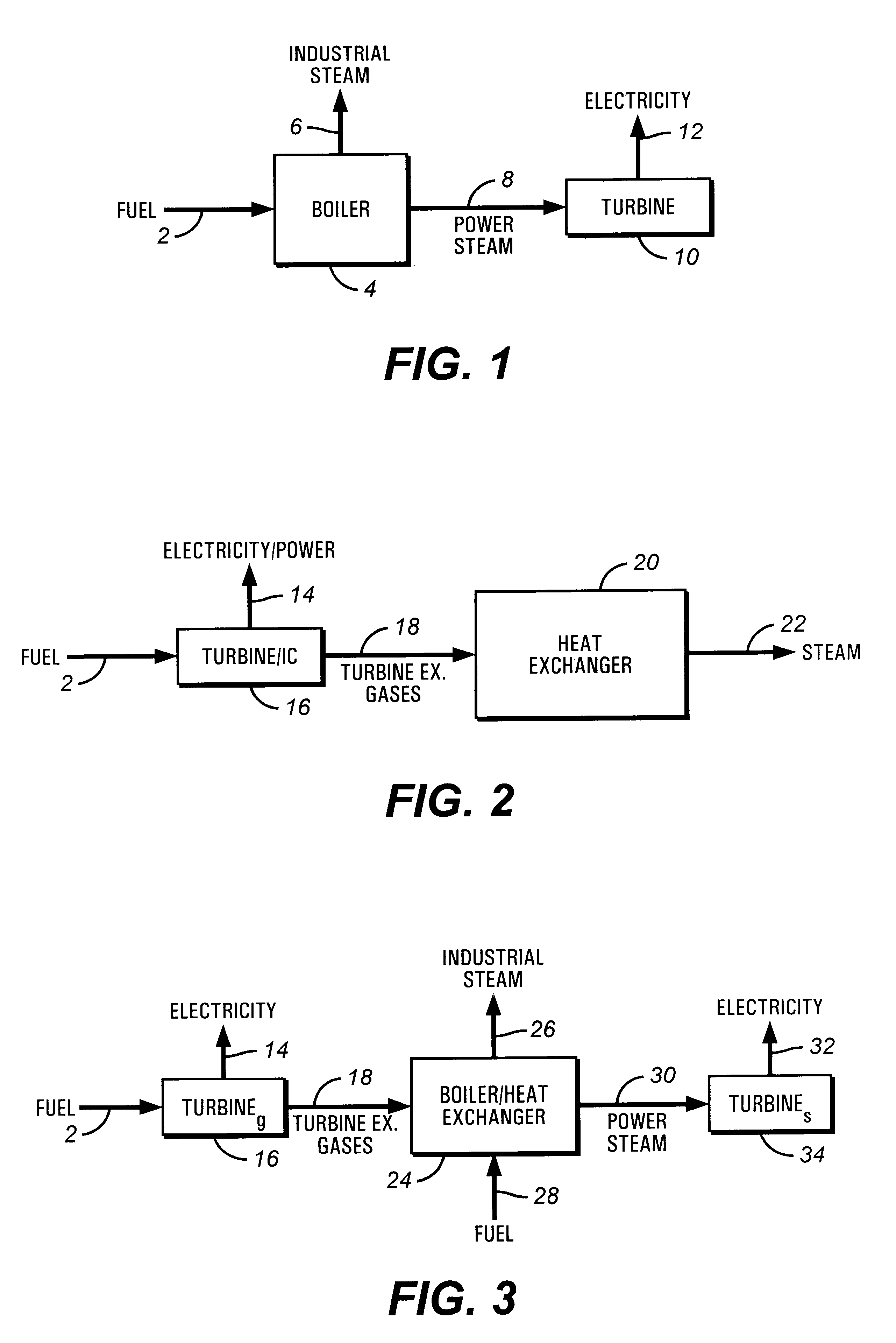Oxidant control in co-generation installations
a co-generation and oxidant control technology, applied in the field of co-generation, can solve the problems of high cost of such a heat exchanger, prohibitive implementation of such a scheme, and disadvantage of introducing a large heat exchanger before the gas turbin
- Summary
- Abstract
- Description
- Claims
- Application Information
AI Technical Summary
Problems solved by technology
Method used
Image
Examples
first embodiment
FIG. 5 presents this invention. The exhaust gases 36 exiting the gas turbine are separated into two streams, a first and second stream 38 and 40. One stream 38 is directed to the boiler, as in prior art. One difference from the prior art is that this stream 38 of turbine exhaust gases is directed to the convective part of the boiler (56, 58). This way combustion chamber 54 will operate at higher temperatures, more efficient from a radiative heat transfer standpoint. The second stream of the turbine exhaust gas 40 is sent to a heat exchanger 44 where the turbine exhaust gases 40 heat a stream of ambient air 42. Cooled turbine exhaust gases 46 can be released in the atmosphere, and the preheated air 50 represents the new, improved oxidant. If the original turbine exhaust gases contain 13% oxygen, it can be considered that this process enriches the oxidant about 60%, with a significant impact on boiler combustion.
Ambient air 42 into the heat exchanger can theoretically be heated up to ...
fourth embodiment
It is noted that the fourth embodiment in FIG. 9 envisions preferably the use of oxidants with high concentrations of oxygen, such as provided from a liquid oxygen source, or from an on-site generation unit (with oxygen concentrations of 85% and above), for example membrane, TSA, PSA or VSA, or cryogenic air separation unit. The addition of oxygen is intended to improve the combustion process, particularly in the presence of low calorific value fuels, such as waste fuels. The implementation of oxygen enrichment in the boiler has been extensively investigated in a previous patent application Ser. No. 09 / 329,555, filed Jun. 10, 1999, incorporated by reference herein, and all the advantages / techniques of that patent can be applied in the co-generation boiler units. In this circumstance, the sensor(s) 62 in combustion chamber 54 may monitor, besides the oxygen content, the unburnt fuel, carbon monoxide, flame temperature, and the like. The control scheme is more involved in this case du...
PUM
 Login to View More
Login to View More Abstract
Description
Claims
Application Information
 Login to View More
Login to View More - R&D
- Intellectual Property
- Life Sciences
- Materials
- Tech Scout
- Unparalleled Data Quality
- Higher Quality Content
- 60% Fewer Hallucinations
Browse by: Latest US Patents, China's latest patents, Technical Efficacy Thesaurus, Application Domain, Technology Topic, Popular Technical Reports.
© 2025 PatSnap. All rights reserved.Legal|Privacy policy|Modern Slavery Act Transparency Statement|Sitemap|About US| Contact US: help@patsnap.com



